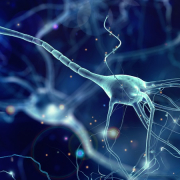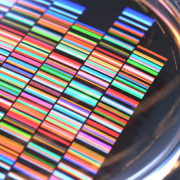Developmental disorder variants found in non-coding genome
We explore new findings that have given 10 families and their children a diagnosis for the first time
Researchers have newly identified seven genetic variants that cause developmental disorders in children.
The new findings, published in the American Journal of Human Genetics, are from a 2011-2015 study that aimed to use genomics to better understand developmental conditions, with the hope of providing diagnoses to more families.
About developmental disorders
Developmental disorders affect thousands of children born each year, and usually present in infancy or early childhood. They can include problems with growth, physical deformities, difficulties with learning or behavioural issues.
Most are genetic in origin, and, while some are inherited, many are the result of ‘de novo’ variants: spontaneous changes in the genome that neither parent has. Everyone has between 50 and 100 of these variants but most of them have no clear effect on health.
Deciphering disease
The Deciphering Developmental Disorders (DDD) study is a collaboration that enrolled around 14,000 children with severe and undiagnosed developmental disorders from the UK and Ireland.
Samples were taken from the children and their parents (a group of samples known as a ‘trio’) to look for links between the genome and unexplained developmental problems. They hoped that by identifying these links, diagnostic assays could be designed to make clinical diagnosis easier and more efficient.
Although the study stopped recruiting patients in 2015, the amount of data it generated means that researchers continue to work and publish new findings. To date, they have published over 200 research papers.
The non-coding genome
Approximately 2% of the genome codes for proteins. This small portion is called the exome and has historically been the focus of genomic research. The remaining 98% of the genome – once considered ‘junk DNA’ – is increasingly being understood to contain regions crucial for regulating gene expression.
The researchers looked at parts of the non-coding genome adjacent to protein-coding regions and identified seven variants linked to developmental disorders. Of these, six were associated with the gene MEF2C, which is known to be essential for musculoskeletal, cardiovascular, neurological, craniofacial and immune development. In these six cases, the gene itself was intact but the changes in nearby regulatory regions prevented it from functioning.
“We found that nearly one-quarter of diagnoses identified in the DDD study in one particular gene are due to non-coding region variants,” said group leader at the Wellcome Centre for Human Genetics, University of Oxford, Dr Nicky Whiffin. “While this this does not mean that one-quarter of all developmental disease diagnoses are due to variants in non-coding regions, it suggests that it could be highly beneficial to analyse these regions in patients that remain genetically undiagnosed.”
As a result of the findings, the families of ten children were able to receive a diagnosis for the first time.
Consultant clinical geneticist at Sheffield Children’s Hospital, Dr Meena Balasubramanian, explained what this can mean for her patients and their families:
“Receiving a diagnosis can allow patients and their families to access support networks and gain a greater understanding of their condition, which can have a huge impact on their lives, as well as understanding the risk for any future children they might have.”
The DDD collaborators say they are “absolutely committed to trying to find a diagnosis for every participating child.”
–









